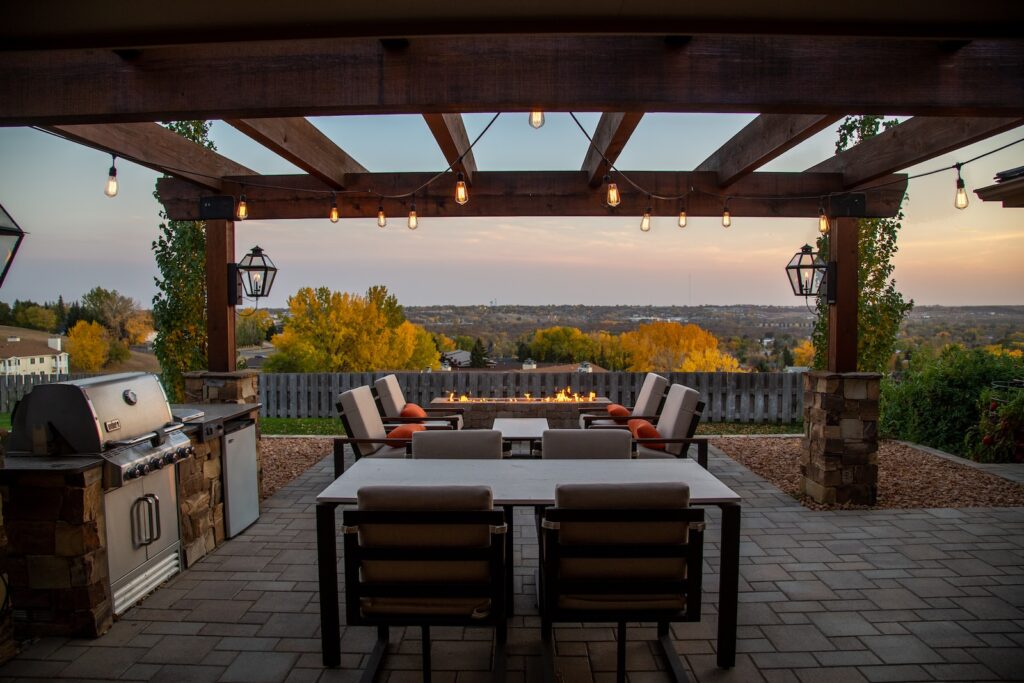Revamping your yard with paving stones
Paving stones are more than just materials for construction, they are essential elements in landscape design that can drastically transform your yard’s look. Rooted in history as the first materials for pedestrian paths and public squares, today, paving stones stand for comfort, style, and practicality. By incorporating them, you’re not only adding beauty to your yard but also boosting its practical use.
A major plus of paving stones is their long-lasting nature. With the right installation and maintenance, these surfaces can last over 15 years while keeping their original look and quality. This durability makes paving stones a top pick for anyone wanting a dependable and elegant yard solution, especially when considering options like interlock Ottawa.
Exploring Paving Stone Varieties
Choosing paving stones isn’t just about utility, it’s a chance to show off your personal style. The array of types and materials available means you can find the perfect fit for any landscape setting.
Granite: The Blend of Toughness and Beauty
Granite paving stones are timeless and continue to be a favorite. Known for their durability and resistance to wear, they preserve their look for years, making them perfect for sophisticated walkways and squares.
Concrete: A Palette of Shapes and Colors
Concrete paving stones are loved for their diverse shapes and colors, mimicking natural stone with various textures. This versatility is ideal for inventive and bold design choices, with modern technologies boosting their functional quality.
Clinker and Split Paving Stones: Merging Style with Function
Clinker paving stones, crafted from baked clay, are celebrated for their robustness and moisture resistance. Split paving stones, on the other hand, blend smooth and textured surfaces for a distinct style and flair.
Preparing for Paving Stone Installation
Before you start laying paving stones, it’s essential to get the site ready. This means evaluating the area and designing the layout of the pathways. Good planning ensures you use the right amount of materials and cut down on excess costs.
Next up is selecting and buying the necessary materials and tools. Quality paving stones and the right tools like levels, shovels, and mallets are key for a successful installation.
The final prep step is getting the base ready. This involves removing the topsoil to a certain depth, laying a sand and gravel layer, and compacting it thoroughly for a sturdy and long-lasting base.
Step-by-Step Paving Stone Installation
Installing paving stones is a detailed process that demands careful planning and precision. Doing it right means you get not only a visually appealing surface but also one that lasts.
Soil Removal and Base Preparation
Start by removing the top layer of soil to about 30-40 cm deep to ensure a stable base. Follow this with laying and compacting a sand and gravel cushion.
Setting Up Restraining Borders
Then, install borders around the pathway. These borders are crucial as they define the pathway’s edges and keep the paving stones from shifting.
Choosing Laying Patterns
Various laying methods exist, like the checkered, diamond, or wavy patterns. The choice largely depends on the design you want and personal taste.
Laying on Different Bases
Paving stones can be set on various foundations, each with its unique characteristics.
For a concrete base, special adhesive or mortar is needed for extra strength and longevity.
Laying on a sand and gravel base? Ensure good drainage to prevent water buildup and maintain the structure’s integrity.
Post-Installation Care for Paving Stones
After laying the paving stones, a few finishing touches are needed for lasting beauty and functionality.
Filling the gaps with a special mix or sand deters weeds and enhances the path’s appearance.
Regular maintenance, like cleaning and checking the joints and borders, keeps your yard looking great for a long time.
Avoiding Common Paving Stone Laying Mistakes
To ensure the longevity and attractiveness of paving stones, steer clear of these common mistakes:
- Skipping proper base preparation: The foundation should be level and well-compacted.
- Overlooking drainage issues: Poor drainage can damage the stones due to water stagnation.
- Wrong use of joint filler: Too much or too little can cause weed growth or joint erosion.
- Forgetting restraining borders: These are necessary to keep the stones in place.
- Using subpar materials: Quality stones are worth the investment for a durable surface.
Enhancing Your Yard with Paving Stones
Paving stones can drastically improve your yard’s look and functionality. They not only elevate your home’s aesthetic appeal but also its market value.
With paving stones, you get a range of design options, from classic to contemporary. Remember, proper installation and care are vital to enjoy their beauty and utility for years. Quality work pays off, not just in appearance but in durability too, making your home uniquely attractive..





